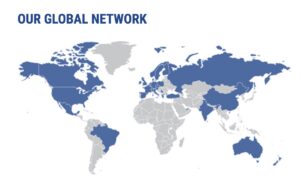Hiring for Remote Positions: Do You Have the Right Processes?
While remote workers and even remote executives have often been a part of major organizations, the COVID-19 pandemic is causing hiring managers to rethink their stance on remote workers. Could they be a greater strategic asset than previously considered?
We are therefore dedicating a multi-part series to the key components of remote hiring including how to:
- Know if a position can or should be make remote
- Conduct a search for a new remote employee
- Ensure that you have the right policies for remote workers
- Interview and make an offer
In this edition, we’re looking at the role of policy for a successful remote team.
The Role of Policy for Remote and Distributed Workforces
While the Coronavirus sparked a massive scramble to put remote work into place, now that distributed workforces are becoming more of a norm, it’s a good time to shore up policies that govern work hours, equipment, security, contact with supervisors and much more.
Generally speaking, employers find that offering a work-from-home option actually increases productivity. That said, remote workforces are most efficient when certain measures are put in place.
That said, having well-thought-out policies means that you’ll have much more flexibility in terms of making a position fully remote.
Communications and Remote Work
The days of office pop-ins, watercooler chats, lunch meetings and “face time” are receding into the distance replaced by a suite of online tools. You’ll have to consider both technology and policy in regards to questions like:
- How often and how will you check in with direct reports?
- What platforms will you use for meetings and presentations?
- How will you keep your team feeling connected during the day?
- How will you encourage employees to create boundaries between work and home life when they are working from home?
Many organizations turn to a combination of products: Microsoft Teams, Zoom, Slack, email and phone calls to achieve the right balance.
Project Management and Remote Work
Where many companies have delegated organization and management tasks to respective employees, remote work may require a centralized approach where everyone is using the same systems and technology in oder to stay “on the same page” vis a vis where a project is situated. Apps like Asana, Jira, Trello and Basecamp have become popular choices for project management for that reason.
HR/IT/Security policies and Remote Work
It’s important to create policies that take this new arrangement into account, including regarding equipment usage and sick time, time off and other key considerations around HR and IT and even security.
Key questions:
- How will employees acquire equipment related to their work and what happens when it needs repair or service?
- How will you ensure that security procedures are being followed?
- How will you handle sick time and vacation days?
Navigating the “New Normal”
There’s no doubt that offering employees remote work arrangements can be a massive asset their satisfaction, to cultivating a family-friendly image, and ultimately to building up the bottom line.
But it can only work with a strategic focus on policy and process. If you need guidance in crafting an approach to remote hiring, we can help. Contact us to talk further about your needs.








